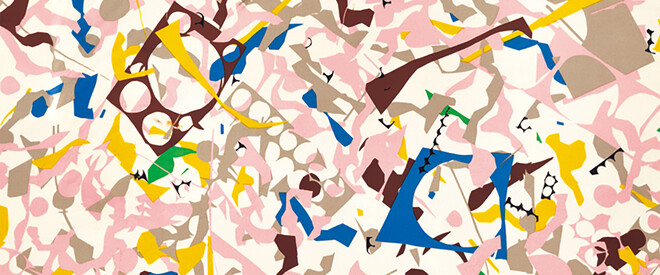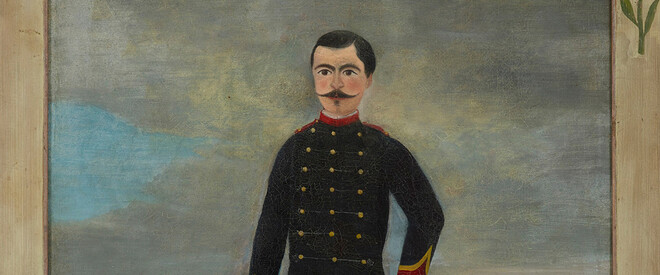It is our great pleasure to hold the exhibition “Aesthetic Eyes of Aoyama Jiro,” as a
retrospective of the life of this peerless connoisseur.
Born in 1901 (Meiji 34) in a well-to-do family in Tokyo, Aoyama distinguished himself in his
mid-teens for his excellent eye for antiques. During his twenties, he worked with Yanagi Soetsu
(Muneyoshi) to sustain the Mingei (folk crafts) Movement in its embryonic stage. He was also
commissioned to compile and edit a pictorial record of the 2,000-piece collection of Chinese porcelain wares collected by Yokogawa Tamisuke, a businessman and founder of the Yokogawa Group. Aoyama spent five years editing the record before it was finally published.
Aoyama’s house became a sort of salon frequented by many cultural figures of Showa Japan, including literary critics Kobayashi Hideo and Kawakami Tetsutaro, novelist Nagai Tatsuo, and essayist Shirasu Masako. Novelist Ooka Shohei later called it the “Aoyama Gakuin Writers’ Salon” (pun on the name of Aoyama Gakuin, a university located in Tokyo). Aoyama was also a close friend of many artists including the multi-talented Kitaoji Rosanjin and potter Hamada Shoji. It is no exaggeration to
say that Aoyama, with his sense of beauty, and with his thorough knowledge of the ceramic wares of China, Korea, and Japan, formed one influential current in the world of antiques in Japan at the time.
On the other hand, in addition to authoring critical biographies of Sen no Rikyu, who had a
profound influence on the tea ceremony, painter and calligrapher Tomioka Tessai, and Umehara
Ryuzaburo, a prominent Western-style painter, Aoyama designed a total of 2,000 books. Nonetheless, he led the life of a “leisured intellectual” without taking up any occupation throughout his life. In the words of Shirasu Masako, Aoyama led “the life of a person who cannot be classified into any one
specific category,” while the potter Kato Tokuro describes him as a person who, “despite being a genius who could do anything he wanted, intentionally chose not to do anything.”
The purpose of the present exhibition is to look into the world of fine arts and culture of
Showa Japan as seen through the eyes of Aoyama Jiro, a devoted seeker of beauty, by displaying old ceramic wares that were reported in the pictorial records which he edited, articles that were displayed in the exhibitions he organized, articles that once belonged to his own collection or to those of people who had ties to him, as well as some of the books of his design and anecdotes from his friendships with
writers and artists.
From the exhibition catalogue.
retrospective of the life of this peerless connoisseur.
Born in 1901 (Meiji 34) in a well-to-do family in Tokyo, Aoyama distinguished himself in his
mid-teens for his excellent eye for antiques. During his twenties, he worked with Yanagi Soetsu
(Muneyoshi) to sustain the Mingei (folk crafts) Movement in its embryonic stage. He was also
commissioned to compile and edit a pictorial record of the 2,000-piece collection of Chinese porcelain wares collected by Yokogawa Tamisuke, a businessman and founder of the Yokogawa Group. Aoyama spent five years editing the record before it was finally published.
Aoyama’s house became a sort of salon frequented by many cultural figures of Showa Japan, including literary critics Kobayashi Hideo and Kawakami Tetsutaro, novelist Nagai Tatsuo, and essayist Shirasu Masako. Novelist Ooka Shohei later called it the “Aoyama Gakuin Writers’ Salon” (pun on the name of Aoyama Gakuin, a university located in Tokyo). Aoyama was also a close friend of many artists including the multi-talented Kitaoji Rosanjin and potter Hamada Shoji. It is no exaggeration to
say that Aoyama, with his sense of beauty, and with his thorough knowledge of the ceramic wares of China, Korea, and Japan, formed one influential current in the world of antiques in Japan at the time.
On the other hand, in addition to authoring critical biographies of Sen no Rikyu, who had a
profound influence on the tea ceremony, painter and calligrapher Tomioka Tessai, and Umehara
Ryuzaburo, a prominent Western-style painter, Aoyama designed a total of 2,000 books. Nonetheless, he led the life of a “leisured intellectual” without taking up any occupation throughout his life. In the words of Shirasu Masako, Aoyama led “the life of a person who cannot be classified into any one
specific category,” while the potter Kato Tokuro describes him as a person who, “despite being a genius who could do anything he wanted, intentionally chose not to do anything.”
The purpose of the present exhibition is to look into the world of fine arts and culture of
Showa Japan as seen through the eyes of Aoyama Jiro, a devoted seeker of beauty, by displaying old ceramic wares that were reported in the pictorial records which he edited, articles that were displayed in the exhibitions he organized, articles that once belonged to his own collection or to those of people who had ties to him, as well as some of the books of his design and anecdotes from his friendships with
writers and artists.
From the exhibition catalogue.

